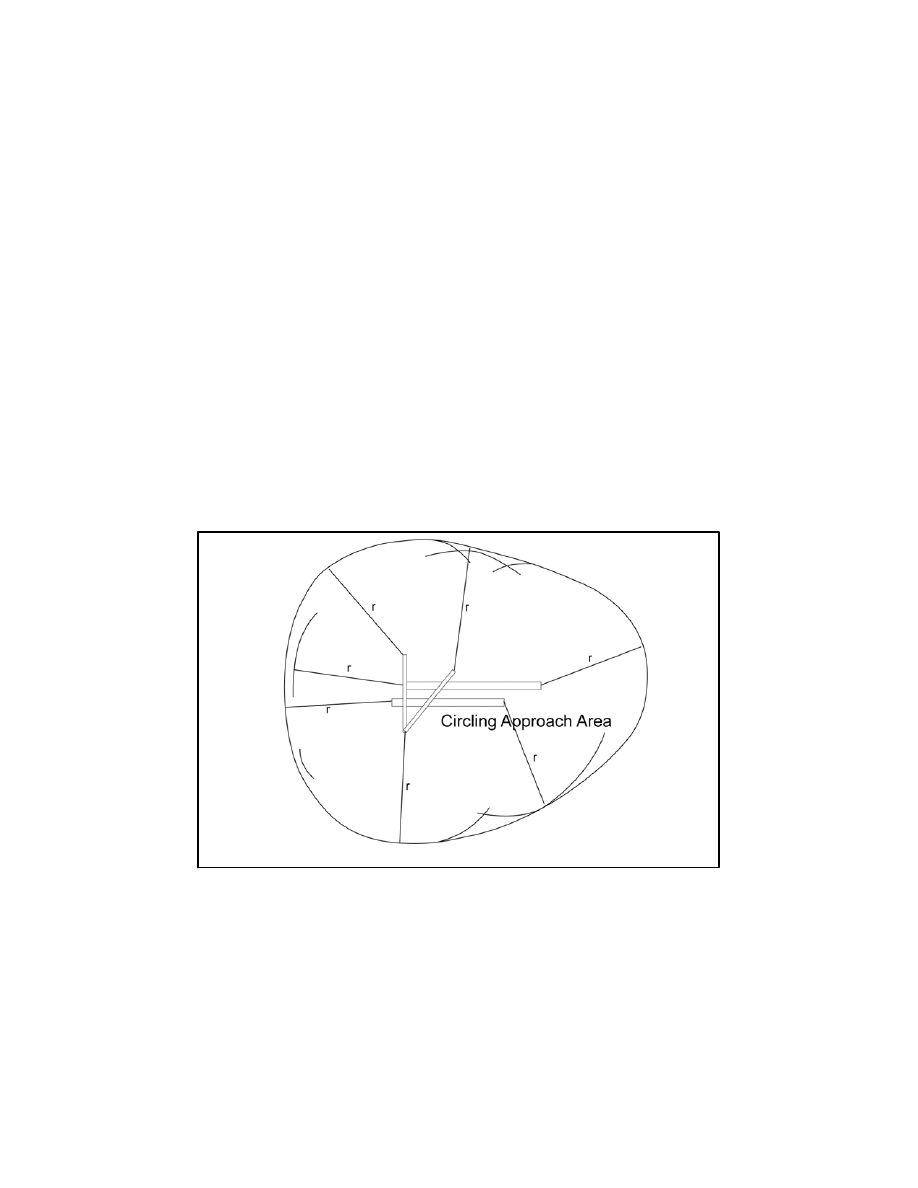
AIM
8/15/19
5
−
4
−
53
Arrival Procedures
1.
Circling approach protected areas are defined
by the tangential connection of arcs drawn from each
runway end (see FIG 5
−
4
−
29). Circling approach
protected areas developed prior to late 2012 used
fixed radius distances, dependent on aircraft
approach category, as shown in the table on page B2
of the U.S. TPP. The approaches using standard
circling approach areas can be identified by the
absence of the “negative C” symbol on the circling
line of minima. Circling approach protected areas
developed after late 2012 use the radius distance
shown in the table on page B2 of the U.S. TPP,
dependent on aircraft approach category, and the
altitude of the circling MDA, which accounts for true
airspeed increase with altitude. The approaches using
expanded circling approach areas can be identified by
the presence of the “negative C” symbol on the
circling line of minima (see FIG 5
−
4
−
30). Because of
obstacles near the airport, a portion of the circling
area may be restricted by a procedural note; for
example, “Circling NA E of RWY 17
−
35.” Obstacle
clearance is provided at the published minimums
(MDA) for the pilot who makes a straight
−
in
approach, side
−
steps, or circles. Once below the
MDA the pilot must see and avoid obstacles.
Executing the missed approach after starting to
maneuver usually places the aircraft beyond the
MAP. The aircraft is clear of obstacles when at or
above the MDA while inside the circling area, but
simply joining the missed approach ground track
from the circling maneuver may not provide vertical
obstacle clearance once the aircraft exits the circling
area. Additional climb inside the circling area may be
required before joining the missed approach track.
See Paragraph 5
−
4
−
21, Missed Approach, for
additional considerations when starting a missed
approach at other than the MAP.
FIG 5
−
4
−
29
Final Approach Obstacle Clearance
NOTE
−
Circling approach area radii vary according to approach category and MSL circling altitude due to TAS changes
−
see FIG 5
−
4
−
30.